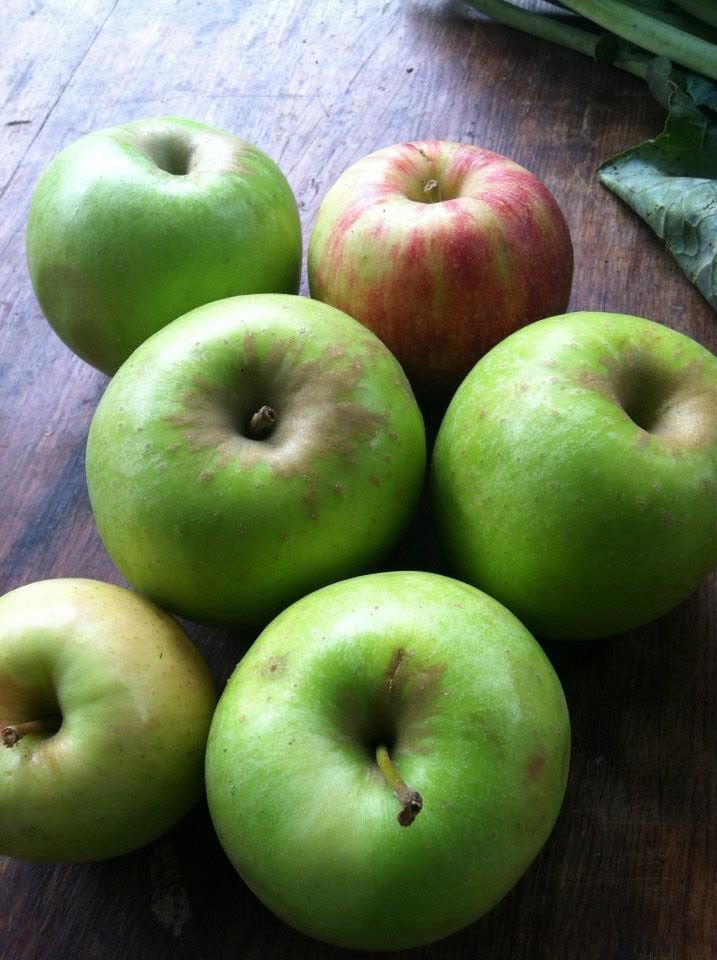Apples

fall
Apples keep, until they don’t.
Apples are a very assorted bunch. Some varieties are good keepers. Some are not. A rainy season can mean the apples won’t store as well (more water in the fruit). A bump or a bruise may mean that particular apple will decline quicker than an unblemished specimen.
So what do you do? Rinse them as you take them out of the box (removes dirt and a lurking insect or two) and inspect them for bumps and bruises. Sound specimens? Keep them in a cool, dark place or even on your countertop but inspect them daily. You may have missed a spot that will start rotting and then spread to a little crevice in another apple and start it rotting as well. During your daily inspection, select the one you’re going to eat right then!
Apples with a blemish? Cut out the bad spot and now you have to make a choice.
Applesauce? Core the apple and discard the bad spots, cut the remainder into pieces and throw in a pot. Add just a tiny bit of water and start to simmer. The apples will break down and eventually you can puree the mixture, adding sugar if needed, cinnamon if you like. Applesauce. Done. And now you can freeze the applesauce.
Apples for pies and cobblers? Here’s an idea from the University of Minnesota. Wash, core and dry the apples, then put them in freezer bags and put them in your freezer for the long rest. When you’re ready to use them, you run cold water over them and peel. Now you can slice them up for pies, cobblers or any other recipe where you’re going to cook the apples. I can’t wait to try this.
Dried apples? If you have a dehydrator, this is easy. Core, discard bad spots, slice and place on dehydrator trays. If you’re using an oven, same drill but the slices go onto a parchment-lined baking sheet and then dried at low, low heat until well dried but still flexible.